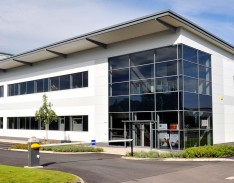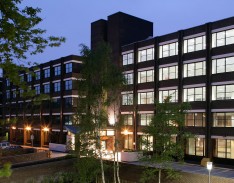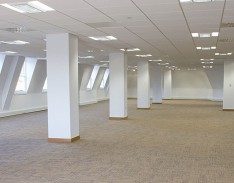The demise of the Midlands’ industrial sector has been called so many times over the decades that many observers appear to think it’s happened.
Whilst low-cost rivals from Asia and Eastern Europe are an ever-present threat, a significant number of manufacturers are not only prospering, but expanding.
We have helped a dozen such businesses relocate to new premises in the last year, and have similar projects under way in the region and elsewhere.
“Many consultancies prefer involvement in glitzy moves to swish new Grade A office space, but whilst such work is enjoyable, it’s certainly not as demanding as finding a new home for an industrial business,” said director Steven Jelfs.
“If you’re looking for new premises for a firm of solicitors or accountants in the centre of Birmingham, you’ll usually have plenty of options.
“If a traditional manufacturing business needs to move from one industrial district to another, it will be much harder to find suitable space.”
Our latest industrial client, Birmingham-based MacDermid, exemplifies the challenges.
Its US parent wants it to relocate to new premises but the UK management team needs to retain its experienced and skilled workforce.
“They are based in Bordesley but cannot go out of town as they would be losing touch with their workers and some of their customers and their suppliers,” said Steven.
“They want around 80,000 sq ft of space, so it’s a fair-sized move, but we think we have found them somewhere suitable nearby.”
Our largest manufacturing relocation in the last year involved one of the region’s best-known metal-forming firms, Barton Coldform.
Founded in Birmingham during the 1930s, the business had subsequently moved to Droitwich, but decided to invest in purpose-built premises.
“They decided Stonebridge Cross Business Park was an ideal location but didn’t really know exactly what they wanted,” said Steven. “Stoford did the shell, then we did everything from designing and fitting out the offices, to putting in a canteen for the employees and installing the lighting, power and compressor installations in their warehouses.”
John Houseman, director-general of Barton Coldform, described the firm’s switch to Stonebridge Cross as a textbook study in manufacturing relocation.
“Barton had previously operated from several buildings at different levels, which was very inefficient, but now they are in purpose-built premises of which any plc would be proud,” he said.
“It makes such a difference when companies in our sector are able to invite customers, prospective clients – and even their bank manager – to such impressive offices.”
Houseman says such moves also enable manufacturers to re-engineer their operational structure.
“Typically, they will have been on their previous site for decades, perhaps even a century, and systems will just have evolved. Relocation gives everyone the chance to design both premises and processes from scratch.”
However, Houseman also counsels that such expensive moves must be fine-tuned.
“The chairman of a plc I used to work for always said that new equipment should never be put in old buildings and the opposite is equally true,” he said.
“There have been cases of manufacturers moving to new premises but not investing in kit and not establishing more efficient production processes, which is a disaster waiting to happen. You need advice and you need quality advice.”
Our reputation for understanding the needs of manufacturers has seen our client list spread swiftly from our Birmingham heartland.
Bognor Regis-based JCC Lighting appointed us to manage its relocation for its 50,000 sq ft regional distribution centre in the Midlands, as did Elster Metering to create a new 45,000 sq ft assembly and warehousing base in Stafford.
We have also won work in north-east Lancashire, helping an engineering firm to switch its 80,000 sq ft production centre and 24,000 sq ft office HQ. This comprises the first stage of development of a 22 acre site, once occupied by Dutch TV tube maker Phillips.
The latter project underlines the need to avoid becoming obsessed by one type of location.
“Ambitious and growing manufacturers often think they need to find a greenfield site for their new premises to make a statement, which works for some people but not for others,” explained Steven.
“We have been successful with Fort Vale Engineering in Lancashire; the site is well positioned for motorway access, only a few miles from their original premises and much better value than a greenfield site, but which they hadn’t previously considered.
“It’s good to have a relocation strategy in outline, but you must always ensure that all the options for your move are then considered, as it is just too expensive a decision to get wrong.”







